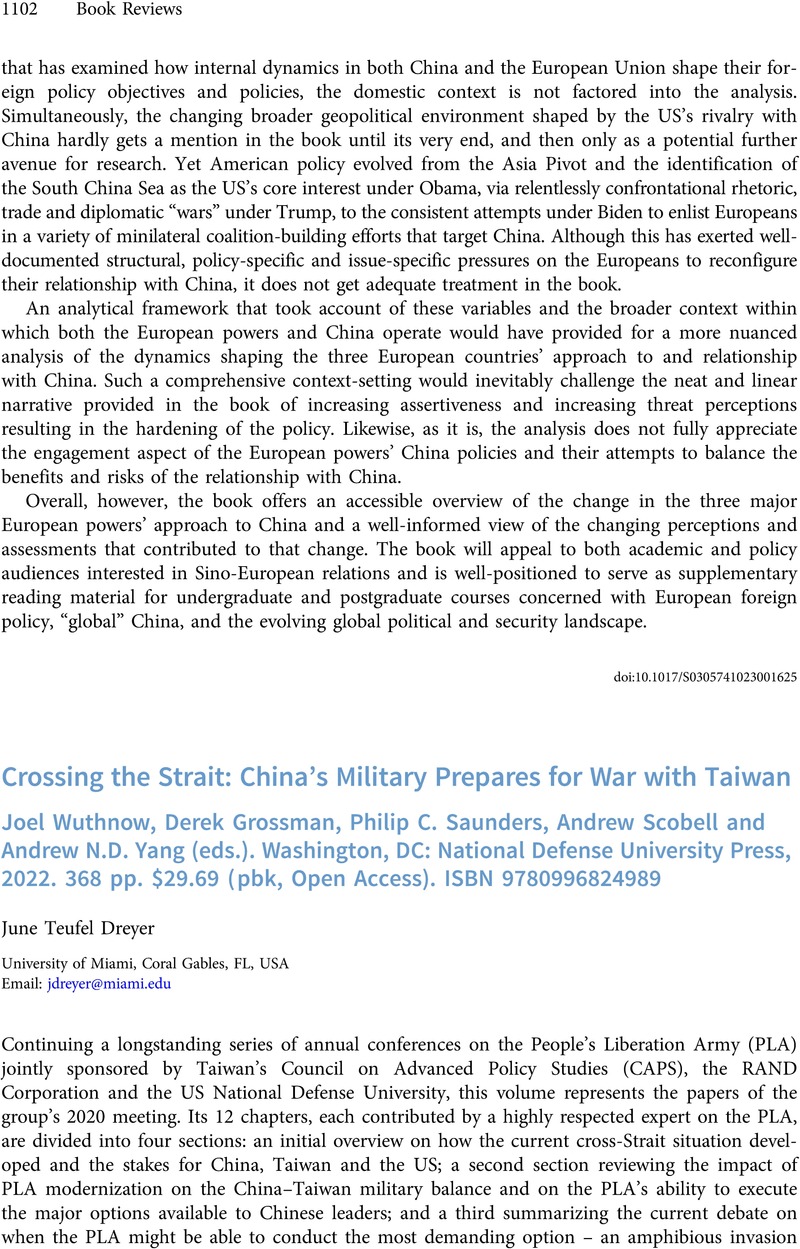No CrossRef data available.
Article contents
Crossing the Strait: China's Military Prepares for War with Taiwan Joel Wuthnow, Derek Grossman, Philip C. Saunders, Andrew Scobell and Andrew N.D. Yang (eds.). Washington, DC: National Defense University Press, 2022. 368 pp. $29.69 (pbk, Open Access). ISBN 9780996824989
Review products
Crossing the Strait: China's Military Prepares for War with Taiwan Joel Wuthnow, Derek Grossman, Philip C. Saunders, Andrew Scobell and Andrew N.D. Yang (eds.). Washington, DC: National Defense University Press, 2022. 368 pp. $29.69 (pbk, Open Access). ISBN 9780996824989
Published online by Cambridge University Press: 27 September 2023
Abstract
An abstract is not available for this content so a preview has been provided. Please use the Get access link above for information on how to access this content.

- Type
- Book Review
- Information
- Copyright
- Copyright © The Author(s), 2023. Published by Cambridge University Press on behalf of SOAS University of London



